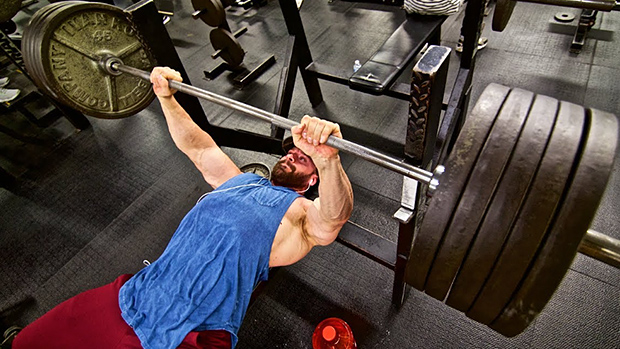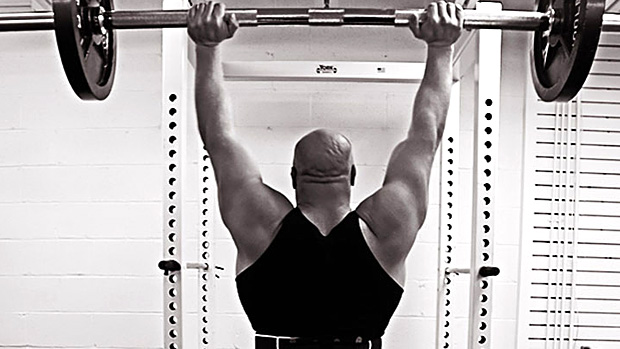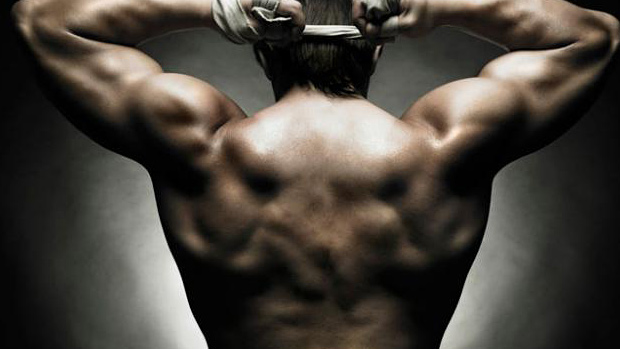Should you train every major muscle group the same way? Heck, do you even need to directly train every muscle to achieve your goal? Here are two totally different ways of lifting. Use these to help you figure out what will work best for your goals.
Training Economy Vs. Targeted Training Method
What is your preferred training method? Do you train every muscle directly, isolating even the smaller ones? Or do you just hit the big muscle groups while allowing the smaller ones to benefit from indirect stimulation?
Your answer is important. It'll give you insight into how best to spend your time in the gym. To figure it out, let's look at two extremes: training economy and targeted training.
For the training economy approach, you focus on the big basic lifts to build muscle and strength. That means you won't directly target a lot of muscles. Let's (half-jokingly) call this the "fridge approach."
For targeted training, you use the best lifts to maximize the recruitment of each major muscle group. Doing this means you'd use more isolation exercises. Think of this as more of a bodybuilder or "sculpture" approach.
Let's take a closer look at each.

Training economy revolves around using the fewest number of exercises to get the job done. You do compound, multi-joint exercises like the deadlift, squat, front squat, loaded carry, bench press, overhead press, dip, pull-up, power clean, and barbell row.
While most experts who use this approach don't recommend all these exercises simultaneously, there's no question that the philosophy has led to many big, strong bodies. It's traditionally done with progressive overload. So, you gradually get stronger on those big basic lifts.
With training economy, recovery is just as important as the work. In fact, that's a feature of limiting the exercises. You decrease the workload to maximize your chances of a positive adaptation through proper recovery.
This approach also relies on plenty of rest days throughout the week, so you'll always be recovered for each workout and have better performance.
You'll find proponents of the training economy approach either recommending a lower training frequency (2-4 workouts per week) or a higher frequency but with minimal volume per exercise at each session (like 5-6 sessions per week but only 1-2 work sets per exercise).
Because of the nature of the philosophy, you'd use a whole-body, or upper-lower body approach, or possibly even push/pull/legs. Whole-body training is the most popular.

This approach involves movement patterns and resistance curves that best load the individual muscles you're trying to develop without focusing on the secondary muscles involved. In fact, the less the other muscles can contribute, the better. You focus on the prime mover you're trying to develop.
Cable exercises, because you can easily modify the resistance curve and line of pull, are a significant tool of this approach. And most who use this approach will favor dumbbells over the barbell.
But this approach often requires more exercises. For example, training back might include:
- One exercise for the costal part of the lats
- One exercise for the scapular part of the lats
- One exercise for the iliac part of the lats
- One "mid-back" movement
- One rear-delt exercise
Things may get even more extensive if you include exercises for the traps and lower back.
To properly stimulate every primary muscle, you don't have a choice but to split your training into body parts. You'd hit one or two (related) body parts per workout. A lot of muscle has been built with this approach for sure. It looks more like a traditional body-part split.
If you compare pure training economy to pure targeted training, the former tends to lead to more powerbuilding or strength gains, but less "complete" physiques. The latter normally leads to a more aesthetically balanced physique but less overall strength and (arguably) less transfer to athletic performance.
I'm not saying you can't get strong with a purely targeted approach. After all, if you make each muscle individually bigger, they'll also get individually stronger.
But strength performance, as it relates to lifting bigger weights on the big basic lifts, has a large neurological component to it. A part of that element is how efficiently you can coordinate several muscles optimally to get the best output possible on multi-joint actions. This is the cornerstone of the training economy approach and something you almost try to avoid with targeted training.
Also, targeted training relies less on progressive overload and more on maximizing fatigue during the set for the target muscle. To be good at demonstrating strength, you must practice demonstrating strength.
On the other hand, the training economy approach will often lead to an incomplete physique. To be fair, there are some rare individuals who can develop a perfectly balanced physique by using only the big basic lifts. But most will end up with more dominant muscles and some lagging ones, which is perfectly fine unless your goal is sculpting the most aesthetic physique possible or stepping on stage.
Now, these flaws can easily be corrected, and I'm sure that you've already figured out the answer.
- If you favor a training economy approach, use a small amount of targeted work for the lagging muscles.
- If you prefer the targeted approach, include one big lift, trained in a heavier zone, in each workout.
That's the best answer for most people, and it leads us to the next question: Which targeted exercises do you likely need, and what multi-joint lifts will be best for you?
Two people could be doing a compound lift and may not put the same emphasis on the muscles involved.
Take someone with short legs relative to their torso and with long tibias in relation to their femurs. That person will naturally bias the quads when squatting, trap-bar deadlifting, and even doing the traditional deadlift. They will also naturally use more quads when doing split squats or lunges, unless they modify their technique to bias the glutes.
Someone with long legs relative to their torso and short tibias relative to femurs will have a natural bias toward glutes when doing most lower-body exercises.
Another factor that can come into play is training experience or experience using your muscles. Whether through training, a physical labor job, or a sport, the more you've used a certain muscle, the better you'll be at stimulating it.
If you only trained "mirror muscles" growing up, chances are you'll be better at recruiting them now. If you sprinted and jumped a lot, your lower body should be more responsive to training than someone who was sedentary. That can also affect your muscle bias during an exercise.
So depending on your structure and experience, your nervous system will tend to favor some muscles a bit more than others.
In theory, a squat hits all the lower-body muscles to some extent. The bench press hits the deltoids, pecs, and triceps. A row or chin-up hits the whole back, the biceps, brachialis, and forearms. But for most people, these three exercises will not build a balanced physique.
For each muscle group, you'll tend to have one dominant muscle that grows a lot more, one that's left behind, and one or two that may get a little bit better. An already-dominant muscle doesn't need a lot of targeted work, but the lagging muscles will if you don't want them to be a weak link.
Another benefit of targeted exercises? They train the nervous system to become better at recruiting a muscle. Over time, targeted exercises might correct certain muscle biases and give you more balanced muscle recruitment during the big compound lifts. This will make them more effective and make you stronger and less likely to get injured.
Here's a list of natural biases depending on limb-to-torso ratio. Remember, while they apply most of the time, things like training experience and posture can change results. Still, it's a solid starting point.
Upper Body:
Long Limbs
- Favorable Bias: Pecs, Lats
- Neutral: Delts, Rear Delts
- Negative Bias: Biceps, Triceps, Mid Upper Back
Short Limbs
- Favorable Bias: Mid Upper Back, Triceps, Traps, Biceps
- Neutral: Delts, Rear Delts
- Negative Bias: Pecs, Lats
Lower Body:
Long Limbs
- Favorable Bias: Glutes
- Neutral: Hamstrings
- Negative Bias: Quads, Calves
Short Limbs
- Favorable Bias: Quads, Calves
- Neutral: Hamstrings
- Negative Bias: Glutes
The muscles in the "negative bias" category need the most targeted work. The ones in the "neutral" category will need some targeted work, but not as much. The muscles in the favorable bias category won't need much, if any, targeted work.
Why not just add a large amount of targeted work for everything? Because the body has a limited capacity to tolerate training volume and positively adapt. Adding volume where it's not necessary isn't a smart move. You're better off investing where it's needed the most.

What kind of physique do you want to build? This is important to consider when building your list of exercises. Although I'll sound like a heretic, some physique goals actually don't require any work for some muscles.
Take a bikini competitor, for example. They don't need to build their pecs. They don't want much biceps or triceps development either. But they do need a big emphasis on glutes and hamstrings and a decent development of the quads, back, and shoulders. Their plan might not include targeted work for pecs, biceps, triceps. They'll only need a small amount for quads, slightly more for delts and back, and a lot for glutes and hams.
If all you want is to be strong and built like a fridge, you probably don't need much targeted work at all. Simply focusing on getting stronger on the big basic lifts will be enough.
It's really important to have a clear vision of what an ideal (but realistic) version of you would look like. Then objectively assess where you are now and which muscles need the most emphasis to give you the look you want. Don't feel the need to conform to a specific model of what you should look like. Decide what YOU want.
For me, I want a slightly bigger, more muscular upper body with more emphasis on delts and pecs while bringing up lagging biceps. I don't want huge legs. I simply want my legs to be strong overall and explosive. I also don't want to look like a turnip.
As such, I'm still squatting and doing plyometrics, but very little else in the form of lower-body work. Because of my structure, squatting, split-squat loaded stretching, and jumping give me what I want. Basically, I like the upper body look of a classic bodybuilder and the legs of an athlete.
My upper body has more targeted work because I have more muscles I want to bring up. Unbalanced training? Yeah, in a way, but that's what I need to do to get what I want. Ultimately, you're training for yourself.
It's not necessary to do the same amount of targeted/isolation work for every major muscle group, and doing so can actually be detrimental to your progress.
It can either lead you to do too much overall work to optimally recover, or it can take away extra work that you could be investing in muscles that need it more.
You don't have an exercise checklist to complete to do a productive workout. Exercises are not the goal. The goal is to improve your physique and physical capacities. You're selecting exercises as a way to work toward that objective, and you should select your exercise strategy with your specific goal and your current physique in mind.





